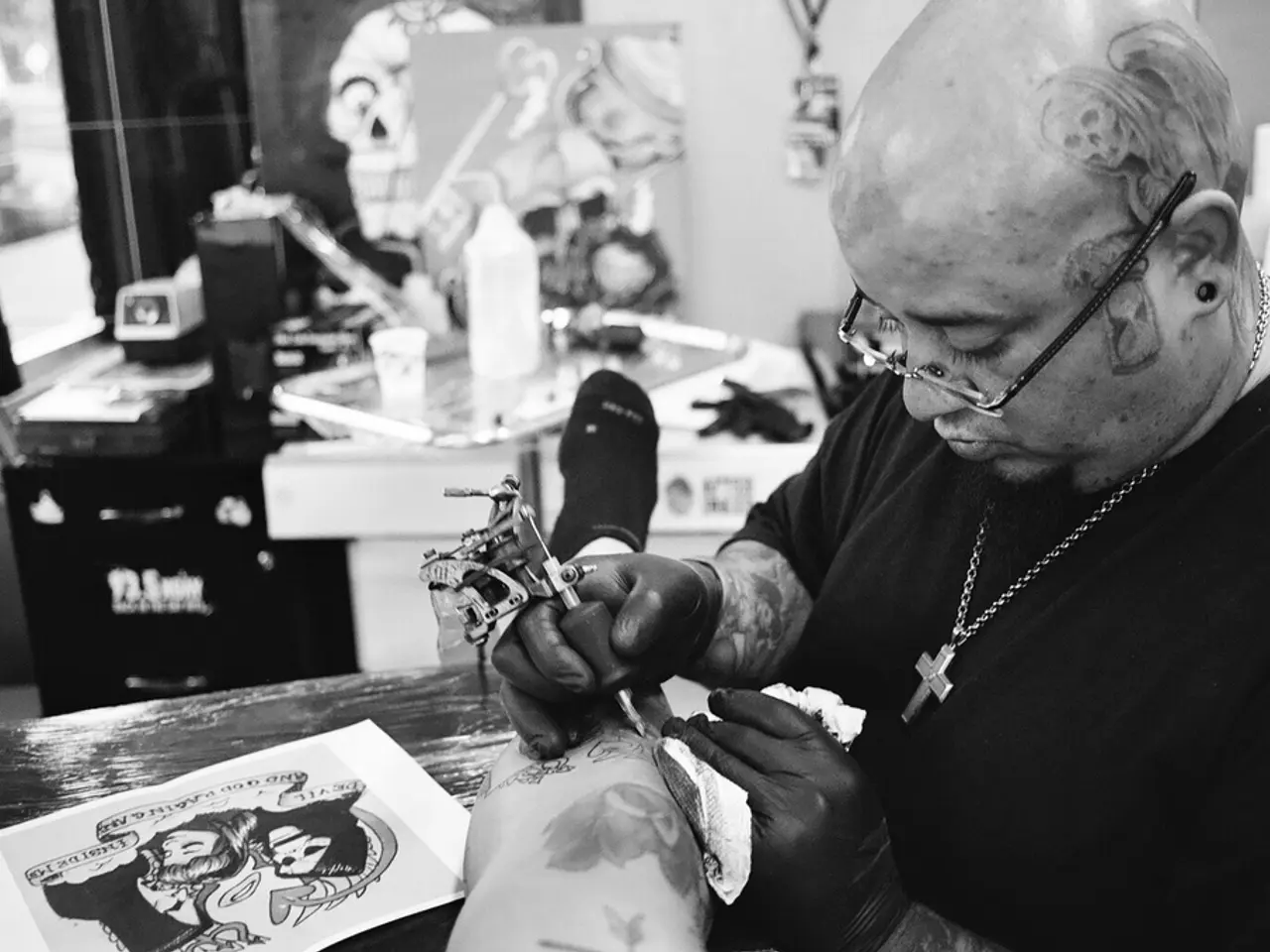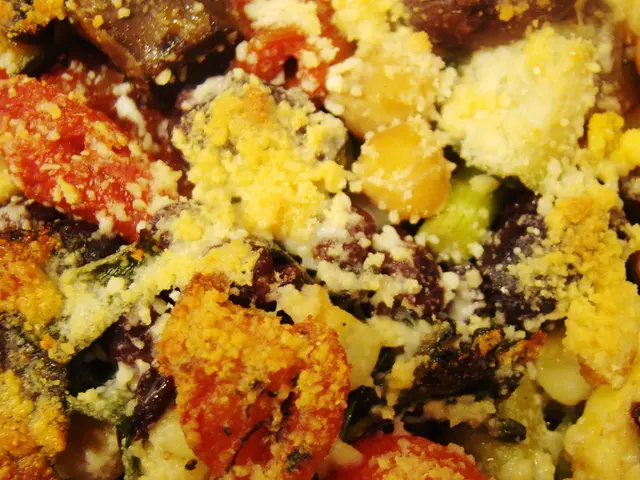EU Regulation to Prohibit Utilization of Various Pigments in Tattoo Studios Concerns Industry Players
The European Union's (EU) REACH regulation has implemented new restrictions on tattoo inks and permanent makeup, particularly affecting Pigment Blue 15 and Pigment Green 7. These pigments, classified as Substances of Very High Concern (SVHC), have been banned due to their potential carcinogenic, mutagenic, or toxic effects to reproduction, or their persistence and bioaccumulation in the environment[1][2][5].
The ban, which came into effect in January 2023, follows a one-year transition period to allow manufacturers time to adapt[1][2][5]. In addition to the pigment bans, the regulation requires manufacturers and importers to provide thorough safety information and labeling, including Safety Data Sheets (SDS) that confirm REACH compliance and educate consumers on safe usage practices[1][4][5].
Key points on affected pigments and labeling from the updates include:
- Prohibited pigments:
- Pigment Blue 15
- Pigment Green 7
- Classification of banned pigments:
- Carcinogenic
- Mutagenic or toxic to reproduction (CMR)
- Persistence Bioaccumulative Toxic (PBT) substances
- Implementation timeline:
- Ban effective January 2023 after a one-year transition derogation
- Labeling and compliance:
- Mandatory REACH compliance certification (evidenced via SDS)
- Clear consumer information on safe product use
- Ingredient disclosure to ensure transparency and safety
These new European rules are part of a broader effort to limit over 4,000 harmful chemicals for the tattoo industry under REACH, aiming to standardize safety and provide superior health protections compared to non-EU markets[1][3][5].
In addition to the pigment bans, the regulation restricts the use of skin sensitizers, skin corrosives, skin and eye irritants of different categories, and substances causing serious eye damage[6]. The regulation also bans the use of isopropanol alcohol in tattoo pigments[6].
Mixtures intended for tattoos and permanent makeup must now include a label stating their intended use[6]. Labels for these mixtures must list their ingredients and include relevant safety declarations[6].
European tattoo artists and ink manufacturers have expressed concerns about the potential impact of these new rules on their business, with some complaining that replacing Pigment Blue 15 and Pigment Green 7 will be particularly difficult[3]. However, the regulation aims to ensure the safety of both consumers and the environment by enforcing strict chemical restrictions and promoting the use of non-toxic ink formulations[1][3][4][5].
References: [1] European Chemicals Agency (ECHA). (2020). REACH: Tattoo inks and permanent makeup. Retrieved from https://echa.europa.eu/regulations/reach/information-for-industry/tattoo-inks-and-permanent-makeup-tattoo-inks [2] European Parliament and Council of the European Union. (2009). Regulation (EC) No 1223/2009 of the European Parliament and of the Council of 30 November 2009 on cosmetic products. Retrieved from https://eur-lex.europa.eu/legal-content/EN/ALL/?uri=CELEX:32009R1223 [3] The Local. (2020). EU to ban two popular tattoo ink pigments from January 2023. Retrieved from https://www.thelocal.de/20201125/eu-to-ban-two-popular-tattoo-ink-pigments-from-january-2023 [4] Cosmetics Europe. (2020). Cosmetic Regulation (EC) No 1223/2009. Retrieved from https://www.cosmetics-europe.eu/regulation/cosmetic-regulation-ec-no-12232009 [5] Save the Pigments. (2020). Retrieved from https://savethepigments.eu/ [6] European Commission. (2020). Commission Regulation (EU) 2020/2081 of 14 December 2020 amending Annex XVII of Regulation (EC) No 1907/2006 of the European Parliament and of the Council concerning the registration, evaluation, authorisation and restriction of chemicals. Retrieved from https://eur-lex.europa.eu/legal-content/EN/TXT/PDF/?uri=CELEX:32020R2081&from=EN
- The EU's REACH regulation expansion aims to limit over 4,000 harmful chemicals in the tattoo industry, as part of a broader effort to promote health-and-wellness by ensuring safer tattoo inks and permanent makeup, while also preserving nature by restricting hazardous substances that persist and bioaccumulate in the environment.
- The integration of science, particularly concerning the safety of tattoo inks and permanent makeup, has led to the banning of carcinogenic, mutagenic, or toxic to reproduction pigments such as Pigment Blue 15 and Pigment Green 7, as well as the promotion of skin-care practices that prioritize non-toxic ink formulations for both consumer safety and environmental conservation.




